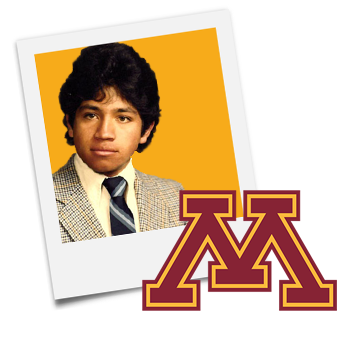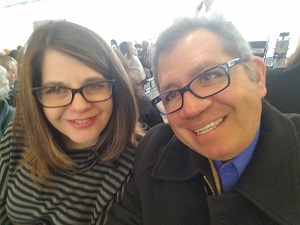A Destiny Driven Team Solves, Not just Sells
Destiny Driven” Team Ideology and Series
A Destiny Driven Team Solves, Not Just Sells
Stop selling your employees about why they need to perform better. Explain why their contributions help solve problems and contribute to the company’s/clients advancement. Employees are more inclined to step up their game when they know their work can add-value to the healthier whole of the organization.
People tend to do three things when faced with a problem: they get afraid or uncomfortable and wish it would go away; they feel that they have to come up with an answer and it has to be the right answer; and they look for someone to blame. Being faced with a problem becomes a problem. And that’s a problem because, in fact, there are always going to be problems!
One of the key components of a successful team originates from their ability to solve problems as they arise, and do so in a collaborative, non-judgemental way. This can be more difficult than it sounds, but it’s important to remember that it’s a TEAM problem, so what’s needed is a TEAM solution.
To begin with, a leader who is focused on results and has their finger on the pulse of the team is going to be able to determine where the gap is in service or quality. It might take some time and a little investigation to ascertain where the bottleneck is, but it is always the responsibility of the team lead to find the issue and then determine the best way to solve it. Additionally, how a leader sets the tone for dealing with an issue is key to how your team members will not only react, but how effectively they will work to fix it.
Because people are born problem solvers, the biggest challenge is to overcome the tendency to immediately come up with a solution. Let me say that again. The most common mistake in problem solving is trying to find a solution right away. That’s a mistake because it tries to put the solution at the beginning of the process, when what we need is a solution at the end of the process.
When a client has called me with an issue, I might try to ascertain if there is one specific individual on my team who is at the root of the issue, but I tend to keep that as personal intel I don’t share with my team. It’s information that I keep in a mental file, but I don’t necessarily jump to the assumption that the entire issue rests solely in their hands. Instead, I gather the client team together to address the issue together for a problem solving session.
Why? Because years of managing people has taught me that approaching a problem as a puzzle the team needs to solve together is going to generate much better ideas – and results – than pulling one person into my office and asking them why they’re messing up. All that typically generates is defensiveness, excuses, and resentment. Conversely, if people feel that they have a team behind them to support them and work with them on fixing an issue they are much more likely to react positively and want to find an answer.
It’s a proven fact that people who feel they are part of a cohesive unit working toward one goal are much more likely to step up to the plate. Think of the most successful sports teams in history along with the most revered coaches. Both have been born from a shared sense of work ethic, working collaboratively to solve an issue. While there may be a standout player here and there, the best of the best always know that the team wins together and fails together. And when you solve problems collaboratively, you increase the amount of stakeholders and the people who want to make sure the solution works. The more people who care, the more likely you’ll find success.
Here is the seven-steps I use for an effective problem-solving process.
- Identify the issues.
Be clear about what the problem is.
Remember that different people might have different views of what the issues are.
Separate the listing of issues from judgment and blame. Too often, team problem solving sessions can become a witch hunt of who to blame or who gets the passed buck passed to their desk last. All this ends up creating is a culture of suspicion and mistrust, and it is the quickest enemy to a cohesive, collaborative team. Instill from the start that the issue is the PROBLEM, not the person. If it seems like the issues do seem to consistently involve one team member, start by finding out if there are tools or training they need that could easily solve the problem.
- Understand everyone’s interests.
This is a critical step that is usually missing.
Interests are the needs that you want satisfied by any given solution. We often ignore our true interests as we become attached to one particular solution.
The best solution is the one that satisfies everyone’s interests but that might not be possible. Find the one that satisfies the most.
This is the time for active listening. Put down your differences for awhile and listen to each other with the intention to understand.
Separate the naming of interests from the listing of solutions.
- List the possible solutions (options)
This is the time to do some brainstorming. There may be lots of room for creativity.
Separate the listing of options from the evaluation of the options.
- Evaluate the options as a team.
What are the pluses and minuses? What is the “all-around” answer. Remember that perfect is often the enemy of the good here. You’re looking for the best all-around solution to the problem. You’ll never find one that works from all angles and makes everyone absolutely happy, but you can find one that will be accessible and actionable.
Separate the evaluation of options from the selection of options.
- Select an option or options.
What’s the best option, in the balance?
Is there a way to “bundle” a number of options together for a more satisfactory solution? Share the work among team members? The possible issue could be a result of one person doing too many things.
- Document the approach you’re going to take to solve the problem.
Don’t rely on memory.
Writing it down will help you think through all the details and implications.
- Agree on contingencies, monitoring, evaluation, and accountability.
Conditions may change. Make contingency agreements about foreseeable future circumstances
How will you monitor compliance and follow-through?
Create opportunities to evaluate the agreements and their implementation. (“Let’s try it this way for three months and then look at it.”)
Effective problem solving does take some time and attention more of the latter than the former. But less time and attention than is required by a problem is not well solved. What it really takes is a willingness to slow down. A problem is like a curve in the road. Take it right and you’ll find yourself in good shape for the straightaway that follows. Take it too fast and you may not be in as good shape. *Add in accountability.
A Destiny Driven Team Focuses on Purpose, Not Just Profits
Employees are inspired by knowing that their hard work makes a difference beyond profitability. Destiny driven employees want leaders who see beyond the bottom line and look to create wider reaching impact that extends into the community and influences social causes.
Ricardo’s Input:
We are all on this earth for a purpose. To teach, to learn, to grow, to help, to experience. I once read a story about a very successful millionaire who happened upon a monastery during a trip abroad whose focus was working with the poorest among us. Within weeks, the man changed his life around: donated his money and his possessions, sold his business, and joined the monastery as a monk* Needless to say, people in his life were shocked by this choice; many thought he had lost his mind. What did he have to say on the matter? He hadn’t lost his mind; he’d found his purpose. What he was put on this earth to do. Being a monk and working with the poor, taking the focus off of him and putting it on others, giving of himself every day rather than taking fulfilled him like nothing else had, even making money.
Now, this might be an extreme case, and certainly not all of us will find our purpose in such a selfless call. Conversely, your life’s purpose isn’t all about what you do when you’re at work. But that doesn’t mean you can’t find the right role in your job that will best inspire and stimulate you and where you can feel your talents are being used in their best way.
When I bring new people onto my team, I always have them take a personality inventory test before extending an offer. I’m not judging them solely on the results of the test, but I am trying to find insight into how they work, what makes them tick, how they interact with others, and where they are going to feel the most inspired. Someone who is an introvert, for example, is very unlikely to be a superstar in your sales department. Someone who is highly creative is not going to find their happy place working with analytics all day. Having this type of knowledge about a new hire has proven to be invaluable to me. I start out knowing where I can best plug them into my team to not just get the best out of them, but also where I can help them to feel the most fulfilled and purpose driven.
I once hired a talented woman in my marketing department who was working as an account manager and dealing directly with clients on a regular basis. Her role was to oversee all aspects of the clients’ account with us and ensure that all of the tasks they’d hired us to manage for them were being accomplished. She was performing well, but it became clear to me through our weekly check-in meetings that something was missing for her. She was getting the job done, but there was a decided lack of enthusiasm and joy in her spirit and her commitment to the team.
When I approached her about this, she shared with me that the constant interaction with the client that is required of an account manager made her feel like she wasn’t getting much accomplished, that instead, she was just making sure OTHER team members were getting the job done, and that wasn’t fulfilling for her. SHe felt more like a gatekeeper than someone who actually contributing in a meaningful way.
It became clear to me during this conversation that this woman was an executor, not a manager. For her to feel like she had put in a productive day at work she needed that task-oriented, crossed that off the list, here is what I produced that is making our work product better feeling. And while she was professional enough and talented enough to make sure her job got done, I knew she would never truly find her purpose working as an account manager. She would eventually come to this realization on her own and likely leave in a year or two.
Rather than lose a talented and valued team member, I realized it was time to pivot. Through a few more meetings, we found what kind of client work was inspiring to her. A highly analytical and strategic person, she enjoyed looking at metrics, key performance indicators, and performance analytics, finding the patterns and discovering where efforts where falling short, and then problem solving with the team to rectify them. Once we discovered this, I was able to work with my Marketing Director to transition her account management role to one where she became an analyst. Once she stepped into this role, the change in her spirit was almost immediate. She not was visibly happier, she became a shining asset on our marketing team as a analyst who could quickly see problem areas and correct them.
The lesson? Find a team members true purpose and you find the way to unlock their true potential. Additionally, if a team member feels that you value them enough to help them find that purpose at your company, you foster true loyalty and connection.
*Unlock people’s potential
*Spiritual teacher – there are spiritual principles that do work in a work situation.
A Destiny Driven Team Leader Knows the Ingredients, Not Just the Recipe
When you spend time with your employees, make it matter. Don’t just expect your time and title and the fact that you sign their paychecks to be enough to inspire them. Employees want a leader that pays attention and genuinely cares about them.
Great leaders take the time to know the ingredients before they can create the best recipe for success. Employees are most inspired when a leader takes the time to know them and show that they have their best interests at heart.
Ricardo’s Input:
Make Yourself a Leader Who Conveys Humble Confidence
If there is one thing I have learned, it’s that the way you arrive at your destiny is at least as important as the place where you end up. As a Destiny-Driven leader who is focused on steering your team through rocky waters, there’s going to always be a lot of information and pressures that you’re privy to that your team is not, nor should they be. It’s crucial that as a leader, you always remember that you are the grounding rod for the team.
Teams that succeed do so because they trust in both the vision and the resiliency of the person in charge. After all, for a team to believe in your mutual destiny, they have to have absolute faith in you being the person to navigate that journey. That doesn’t mean that you handle all the pressures and deal with all the worries alone, and you certainly can’t do it without ensuring that you’re ready and able for the challenge. A true destiny-driven leader has to be up to the challenge, which requires you doing a lot of personal work on yourself, and you have a trusted team helping you execute and deliver.
We have all heard the phrase “Never let them see you sweat.” It’s typically a saying we associate with “competition”; never let THE OTHER GUY know you’re rattled or not prepared. But it’s also a sentiment that pertains to how you allow yourself to be viewed by your team as well. A CEO who appears to be frightened or flapable doesn’t inspire confidence or a sense of security in anyone. Consider some of our more revered and successful Presidents in history, like FDR or JFK; both of them were excellent leaders in part because they demonstrated and communicated a sense of authority and control in times of real crisis.
This is also true for a leader of a team of ten or a leader of thousands. In fact, a leader’s inability to maintain an appearance of confident control can result in making whatever difficulty you’re currently facing become twice as big as it was before. Consider this: If your team picks up a sense of panic from you, what will they likely do? You’re the person they are going to look during a stressful time, and if you appear to be worried, they’re not only going to worry themselves; many are going to interpret your concern as a sign that they should jump ship and find another job. The last thing you need during a professional setback is to lose some of your best team members. This is why it is crucial that a leader has cultivated the talent of always maintaining their “game face” and conveys a sense of stability and authority. How do you make that happen?
It’s crucial that you continually invest in “me time” and self care. This can be counterintuitive to some leaders, who believe that working around the clock is always the answer. But consider this; if you’re continually stressed and have not cared for your physical and mental well-being, how can you possibly meet new challenges and setbacks when they arise? Think about a time in your personal or professional life where you weren’t taking care of yourself. Maybe it was when you were in college, cramming for exams and not getting enough sleep or proper nourishment. Maybe it was when you were working several jobs in your youth to be able to get a downpayment on a car or a house. If a setback had come along at that time, – like your car breaking down or an illness in your family – would you have been able to meet that challenge with all of your power and focus? Of course not. And being a leader is no different.
When coaching leaders, I always stress the importance of taking personal time for rest, reflection, and growth. Meditation, retreats, moments with family and friends, and vacation time are all worthy of your attention and are absolutely needed in order for you to be at your fullest potential to be a leader who has the focus and personal resources to see a team through a crisis. You need to be at your best; clear-headed, rested, balanced and strong. Find a routine that works for you and adopt it as your new normal and you will notice the difference.
Building a Team that Can Weather the Storm
There’s a lot of sayings we have all learned over our lives that speak to the importance of having the right parts of the puzzle in place: The whole is only as good as the sum of its parts.
A Destiny Driven Team is Focused on Innovation, Not Just Ideation
When given the right role and resources, the best employees will instinctively challenge themselves to be more innovative in their work – and will perform better. Provide your employees the resources and inspiration to be innovative in their work. Stay close enough to your employees’ activities to know the 2 or 3 skills and/or resources that each would require to take their performance to the next level.
A Destiny Driven Team is Focused on Significance, Not Just Success
Helping your employees to be successful is important, but not inspiring enough in itself. People want more out of their leaders and if you can activate the natural talents of your employees in ways that make them feel more responsible about their jobs, you will be inspiring something that is more significant; true pride and joy in their work. This has longer lasting impact.
A Destiny Driven Team is Focused on Personal Growth, Not Just Responsibility
when a leader can help foster the professional growth and development of their employees that performance most flourishes. Leaders must take more time to mentor their employee’s development and growth outside the office as well as inside.
A Destiny Driven Team Focuses on Empowerment, Not Just Accountability
A Destiny Driven Team Focuses on Respect, Not Just Recognition
A Destiny Driven Team Focuses on Collaboration, Not Just Execution
A Destiny Driven Team Focuses on Excellence, Not Just Status Quo
A Destiny Driven Team Focuses on Trust, Not Just Transparency
Tips for a Successful Life
Recommendations for students entering the workforce to be successfully employed.
I have been blessed with high-quality education since I was young, at both public and private schools. This education includes a post-high school education and a Master’s degree. But, despite what many think, having a top-notch education isn’t always a fast track to getting a great job immediately after graduation.
I learned quickly after entering the workforce that a great company needs to have team spirit, and that a great employee needs to foster that spirit. After years of working for companies and now over 20 years leading my own marketing agency, I have truly learned the importance of knowing and nurturing great working environments. In this blog post I will show you what great companies have in common and how to find the right company for you.
What is “team spirit”?
You may have heard the term “team spirit” in regards to your school’s sports teams, or any chapters or clubs you may be a part of. But, what does team spirit mean in a professional setting?
Great companies have leadership that understands the importance of quality of life for every member of the organization. A company can show this through respectful and fair communication with clear work tasks and job descriptions.
Great companies know that human capital is one of the most valuable assets that create collaboration, innovation, productivity, and efficiency. All leadership members must understand how important this is to the company to obtain great success. This is what makes up team spirit and a good leader makes it a priority to nurture that positive environment daily.
At Cazarin Interactive, we prioritize clear communication, which forges great comradery and team spirit. It has taken years to truly learn how to implement it effectively and sustain it daily.
My advice to young professionals is to understand this fact and create an approach that is congruent with the desire to be part of a great team. When interviewing for jobs, search for a team that is collaborative, productive and efficient. Aim to join a team with great spirit. This is where you will be happy and provide your best work.
Where do I fit?
Now that you know what team spirit means, you have to decide where it truly fits in your life. Not every company you apply to will be a great fit for you. You can begin by understanding your strengths and weaknesses and by taking an introspective look at what truly makes you unique. Once you have done this, you will have a stronger feeling about which organizations have your type of team spirit, and which ones don’t.
If I were to go back and give my younger, newly-graduated self some pieces of advice, these would be my seven tips.
The 7 keys to a great professional life
Self Awareness
Understand yourself by identifying your strengths and weaknesses. How can you best contribute to a team? Understanding yourself requires being open to feedback.
Empathy and Communication Skills
Understand that there are different points of view to every situation. Use humility, gratefulness, and empathy in your communication with other members of the team.
Balance in your Life
In order for you to be a great team player, you need to have balance. Use the 7 F’s of Future, Faith, Fitness, Finances, Friends, Fun, and Family. Measure these every quarter and adjust accordingly when you see imbalances.
Time is a Valuable Resource
Time is a resource that can’t be purchased. Time is finite. Use it in the best way possible. Create amazing memories, help others, and take care of yourself and your family.
Authenticity – Be the Best Version of Yourself
Once you are able to put your ego aside, you will be able to communicate in an authentic way and interactions will be much more effective.
Continue to Learn
There is so much to learn. Open your mind to other possibilities, other perspectives, and find the best ways for you to learn.
Joy & Happiness
Keep this always in mind: What brings you joy and happiness will guide you to make the best decisions for yourself.
Qualities of a Great Company
The more you understand and practice those 7 keys to a great professional life, your vision of a great company will become clearer. These are the main things that companies with great team spirit and camaraderie do:
- Include Others: Include employees in decisions when possible. When employees feel included in the decision-making process, they embrace the change and help to make the transition to acceptance smooth.
- Be Positive: Always look at the positive side of any issue.
- Strong Leadership: These leaders understand the importance of team spirit.All managers at a great company understand and forge team spirit by having respect, listening skills, and proper communication.
- Resiliency: Resilient teams consistently deliver superior results. You can see this in companies that retain employees and that have built a positive reputation in the marketplace.
Final Takeaways
When someone chooses my company, Cazarin Interactive, as their marketing partner, our team becomes a part of their company as an extension of the marketing and sales department. We understand team spirit. We help to develop brand identity, messaging, and implement an ongoing marketing strategy that will help businesses grow in a healthy manner. If it weren’t for my understanding of the 7 key values to professionalism and the importance of team spirit, Cazarin Interactive would not be the great company that it is today.
Resources:
Question:
Do you want to utilize our Marketing Fusion (™) and see real growth in your business? Contact our marketing department today.
Money can’t buy everything!
Recently I was thinking of situations that have made my life rewarding. I do believe I have a fantastic life. Would not change it for anything, came to realize that money can’t buy some of the most rewarding situations that I have been involved in the past.
Since I like stories, I must use one of my stories to illustrate this point. I usually tear off when I think of it. I hope you like it!


Dr. Ricardo
I am going to entitle my story “Dr Ricardo” , about ten years ago I was asked to donate some of our work/time to an organization called “Children’s Surgery International”. We did and provided a website to promote their cause. It was nice to receive a certificate of appreciation at a fancy dinner. A few years later I was asked to participate in one of their missions to help children who had been born with cleft palads in different parts of the world. I accepted and took the position as logistics manager and translator to a mission to Chihuahua Mexico. The group had four surgeons, six nurses and seven people who would help to play with the kids and aid as needed.
My job was to help the group to go through Mexican immigration and translate for the mothers and families from the time they provided their children to us at the time of surgery to the instructions needed for after care for their children. It was exciting and the comradery that I experienced with the group was fantastic. Surgeons who donated their time free of charge, nurses as well. We took many medicines and equipment from the US to Mexico. We had some issues in immigration, but we were able to resolve them easily once the nature of the mission was explained.
I was part of the team selecting the children to be operated. There were about 75 families wanting to have the operation, we had enough resources and time for 35 surgeries, but 37 were selected. We all agreed to work extra time and do whatever it was needed.
I had to wear scrubs which made me look like one of the surgeons and early on, families would refer to me as Dr. Ricardo. The first couple times I corrected them indicating I was just a translator. Since it happened so often, I let them call me Dr. Ricardo ?

I thought my job was going to be very easy, however on the first translation I almost fainted. There was a mother with an 8 month child. As she handed her child to the surgeon she started to cry and ask with broken words to take care of her precious child. As I started to empathize with her, my throat closed up and I had to translate to the surgeon. Quickly recovered and translated what she was saying. The surgeon was awesome and smiled, saying with his smile and embracing the child that all will be ok. I then took the woman out and spoke briefly to her. Told her about our American surgeons experience and their abilities. There were several situations similar to this one and then came one of the most rewarding experiences on the trip. A handsome boy we will call Pedro for this story came. He was 14 years of age, he came alone
to the surgery room and he was nervous. I asked him, Pedro how are you doing? – He answered “Bla ta eh no” I couldn’t understand what he said to me. He had a hole on the roof of his mouth and his enunciation was very hard to understand. I asked again and he answered “Te lo ka da “ this time I acted as if I understood and took him to the surgery room. I was able to hold his hand until he felt asleep for surgery and explained the process to him. He was one of the last patients we operated on the last day. The next day was a Sunday and the task at hand was to go through the hospital, check on the kids. By now we had three days of surgeries from 7 am to 9 pm, we were tired and of course I was Dr. Ricardo to everyone. I was the person providing the instructions in Spanish for after care, given to me by the real doctors in English of course. The surgeons instructed me to check on some of the kids for bleeding and make sure the kids were comfortable with minimal pain.
As I walked through the floor which had 37 beds in this large floor, Pedro’s mother held my arm and said: Dr. Ricardo, I have to share a story with you. Please share it with the rest of your team. Pedro came out of surgery at about 9:00 pm and I was by his side, he slept deeply and woke up at about midnight and yield at me and said “Mom do I speak ok now?” She answered yes honey you do. Pedro then said: “Great, I thought it was just a dream”. He was approaching puberty, he wanted to be heard and to be similar to all of the other kids. HIs mother then told me, Pedro woke up again at 3:00 am and 7:00 am and the same thing happened. He kept thinking it was a dream, but he now speaks like everyone else ? Her last words were thanks for changing my son’s life for the better…. As she said this, a warm feeling came into me, my heart rejoiced. I knew at that moment, she was right, we had changed Pedro’s life. It was very rewarding to me. A few minutes later I shared the story with my team. My team said, Ricardo, thanks for the story. It was a very exhausting experience but well worth it! We changed children’s lives …

Resources :::::
Children’s Surgery International website.
Questions:::::
Do you believe we all have the ability to change people’s lives?
Do you have a situation in which you knew there was not enough money to replicate it?
What life experience have you had which gave you incredible personal reward?
One Act of Kindness
In the Spring of 2007, I was very happy. I had just sold a large project and put a few hundred dollars in my pocket. I went for lunch and behind me there were three roof workers, all of which were dirty and hungry. I had decided I was going to pay for their lunch; however, I didn’t do it. In my mind, I played the scene and thought they would be suspicious of me by giving them something for free. I took my sandwich sat down and began eating. As soon as I took the first bite, the idea of “One Act of Kindness” was transferred to me. It was a great idea and I began writing all I could and this was the birth of www.oneactofkindness.org
The idea was to create cards that anyone could print and give to people in the process of executing “Acts of Kindness”. See example of the cards below.

The cards give a sense of permission to help others without expecting anything in return. Something that I realized was lacking when I wanted to pay for the lunch of those workers.
In the past ten years I have received great emails from people around the world. Canada, England, Australia, Ireland just to name a few. These were from people who received cards from people doing Acts of Kindness and enjoyed whatever was given to them.
It is VERY gratifying to receive these type of messages and to know that a bit more kindness is being sprinkled around the world. You can see some of these messages from recipients.
What is your Personal Legend?
Recently conversing with a young friend of mine, she recommended a very nice small book called “The Alchemist” by Paulo Coelho. The book is a story of a young shepherd in search of what the author calls his personal legend. The book is an easy read and surprisingly I had the time to read it in a couple days.
The book makes the case for everyone having a personal legend a destiny if you desire to see this way. The story makes the case for looking at life as a learning experience. Whether the situation is what you would consider bad, it has an ultimate purpose and can provide a teaching lesson. In the story, the boy had all of his money stolen by a thief in the middle of a trip, and this event caused the young boy to seek employment with the owner of a glass shop. While he was working at the glass shop, he learned much from the people he interacted with, as well as learning to speak another language.
While reading the book it made me reflect on my own personal life and those events that I thought were “bad” that actually made me into the person I am today.

My own personal legend had its own turns and it is only when I reflect on it that I see the positive effect. Some events that I thought were bad that were actually very good for me:
I grew up in Mexico City with a very nice family. My father was an entrepreneur and my mother was a housewife. I was the oldest of three and the only male. I always thought that not having a brother was a bad situation. This led me to appreciate the incredible male friendships that I have yet today after 45 years. They are my friends and call themselves my brothers. I then came to the USA and stayed with a family who had a two year old boy, he became my brother and he doesn’t remember a day without me. He is an uncle to my daughters and I am uncle to his.


While studying at the University of Minnesota, my father who was responsible for all of my financial affairs gave me two options: comeback to Mexico and go to the best Private University or find a job to pay for your expenses and stay in Minnesota. I had very good grades and INS (immigration and naturalization service) gave me authorization to work, rare for everyone. I believe it was a sign that I was meant to stay in MN. I became a janitor at the time, and I disliked it very much, but as I think back it was one of the best things that happened to me. I learned about hard work, sweat a bit, and the overall experience humbled me a bit. I learned the value of a dollar and finished my degree on my own with scholarships.
In 1985 I fell in love with a Minnesota girl. She introduced me to her parents and family and we were together for over two years. I knew it would not work for us long-term, but I really liked my relationship with her father and step-mother. I talked to her father and step-mother and told them I didn’t want to lose my relationship with them. They agreed and our friendship continued for over thirty years. Her father was my best man when I got married to my current wife. Without knowing her I would not have met her parents, my friends ?

Resources :::::
The Alchemist by Paulo Coelho — Amazon
Questions:::::
Do you believe we all have a personal legend or destiny?
Do you think you know what your personal legend is?
What life experience you thought it was bad, has made you a better person?
Are you following your personal legend?






